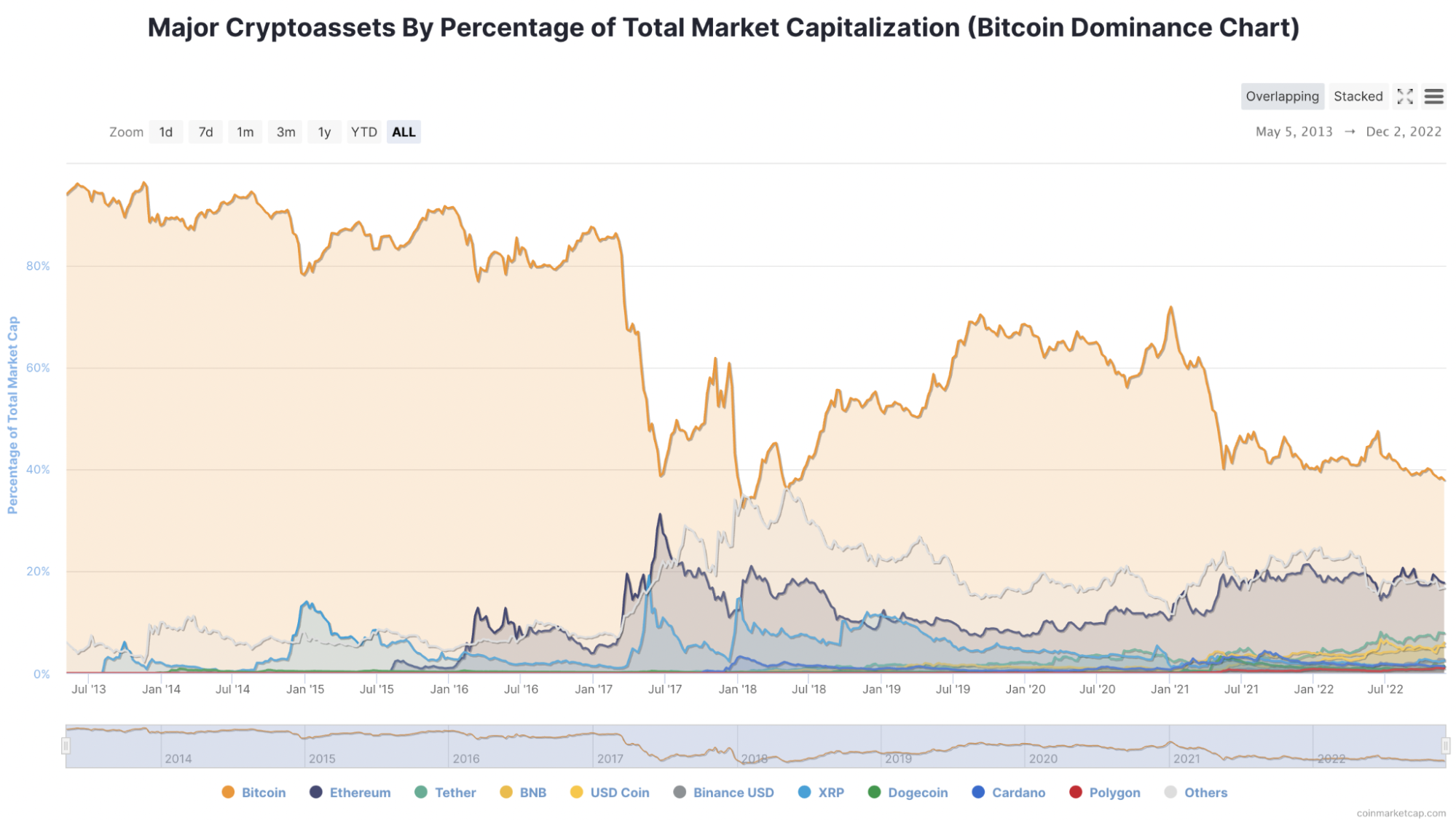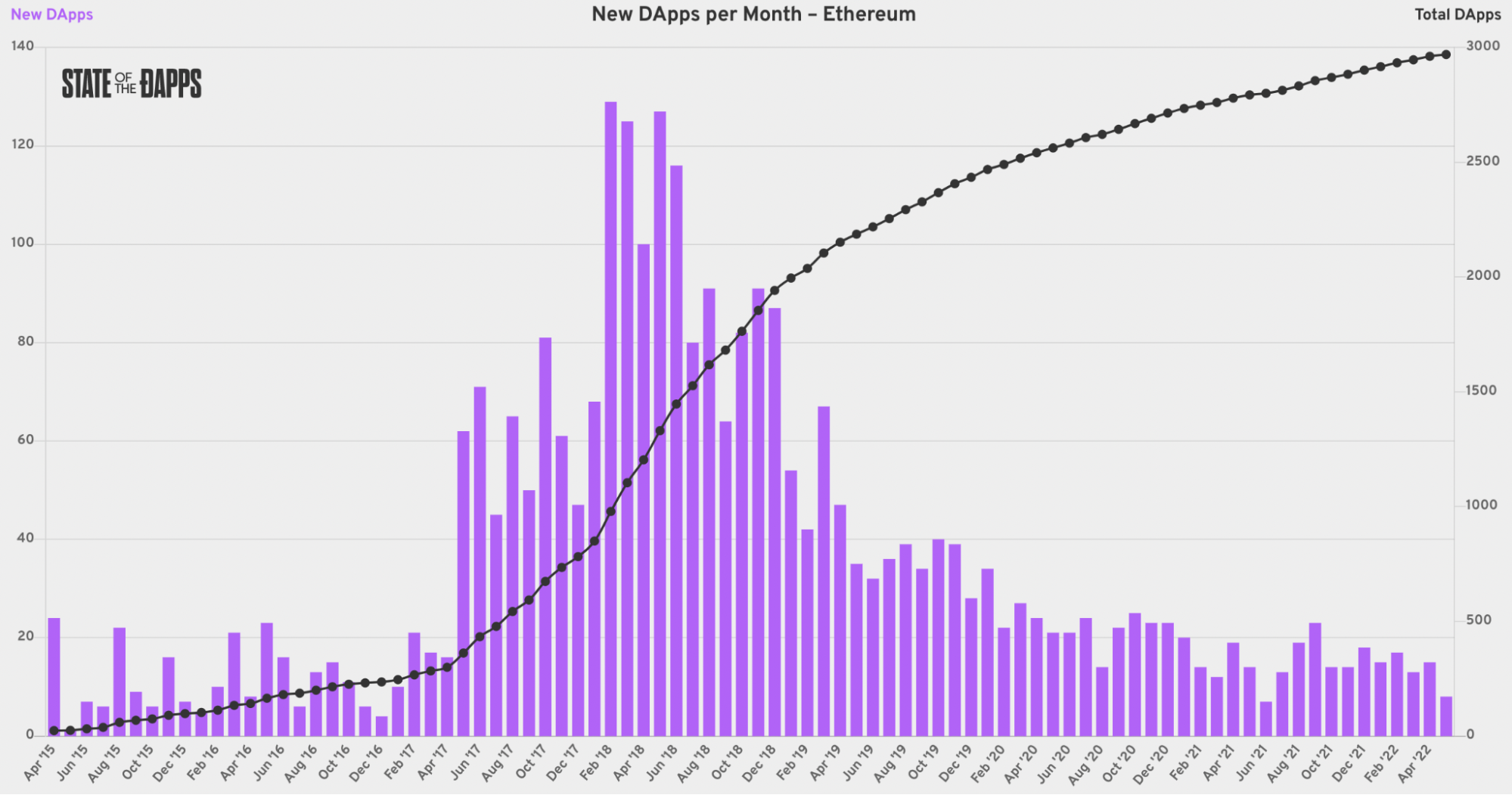If you’re ever asked to name two cryptocurrencies, chances are the first two assets that come to mind are Bitcoin and Ethereum.
There is good reason for this, as both stand as the two largest cryptocurrencies in the world based on market capitalization. While Bitcoin has always been the most dominant form of digital currency, Ethereum has always been the world’s most popular altcoin. However, Bitcoin’s dominance may one day fall away, with some experts suggesting that a “flipping” could happen sooner rather than later.
Bridging the Gap: What’s the twist?
There is little doubt about Bitcoin’s position as the world’s most famous cryptocurrency. The wild bull run of 2021 saw BTC’s market capitalization rise to $1.2 trillion before falling significantly in 2022’s “crypto winter”.
For Ethereum, a rally to a $500 billion market cap was similarly astounding, but a decline to less than $200 billion in 2022 shows that BTC still reigns supreme in terms of size.
Talk of Ethereum growing to overtake Bitcoin is nothing new, and themes of a reversal – the act of ETH “reversing” BTC’s position at the top of the table of largest assets by market capitalization – have been emerging for years now.
Virtually all commentaries agree that a reversal will be confirmed when Ethereum’s market cap surpasses Bitcoin’s.
Given BTC’s age and reputation, this may be a tall order for any project, but history shows that the two assets have been remarkably close in the past, and that current trends indicate declining dominance for Bitcoin and a slight rise for Ethereum.
While there remains a gap of around 20% in terms of market dominance between BTC and ETH, the gulf is at its lowest point since early 2018 and the emergence of new projects appears to be pushing investors away from Bitcoin while embracing Ethereum’s blockchain – ecosystem more. .
However, there is still much work to be done. At the time of writing, Ethereum’s market cap of $155 billion is less than half of Bitcoin’s $327 billion. This means we need to see Ethereum’s current value more than double with Bitcoin’s remaining static for a reversal.
Ethereum is more functional than Bitcoin
Experiencing such exponential growth while Bitcoin remains stationary may seem unlikely, but recent developments for Ethereum’s blockchain certainly improve the asset’s functionality compared to its competitors.
While Bitcoin’s primary function is to store wealth for investors, Ethereum boasts a programmable blockchain and has become a major hub for crypto developers.
As the cryptocurrency ecosystem continues to embrace increasingly advanced decentralized applications (DApps), various other decentralized financial services, NFTs, and other digital tools, Ethereum has been placed front and center of a whole new vibrant landscape.
Around 3,000 different DApps have been built on Ethereum’s network, and statistics show that this number continues to increase.
Given that Ethereum is recognized as a highly functional place to host decentralized services, it is likely that the network will continue to grow in the age of Web3s and the metaverse. These landscapes thrive on high-utility blockchains, and in this regard, ETH offers something that BTC is too primitive to emulate.
The rise of digital oil
Bitcoin’s store of wealth has led to the asset being heralded as “digital gold”, but if this is the case, then Ethereum must be considered “digital oil”, thanks to its superb levels of utility today.
At the core of this tool are Ethereum’s smart contract features, which were added to the blockchain in 2015. In 2021, approximately 3,920 developers were included in the Web3 ecosystem, which helped Ethereum cement its place as the blockchain network with the largest volume of active builders.
Furthermore, Ethereum is constantly expanding its functionality. For example, in August 2021, Ethereum introduced a burning mechanism for its cryptocurrency, Ether, categorized under EIP-1559 and included in the London hard fork. This empowered the network to use fixed fees instead of auction-based transaction fees on the network.
The Ethereum Foundation supports these network improvements, led by the asset’s co-founder, Vitalik Buterin.
Crucially, Ethereum underwent “The Merge” in September 2022, a long-awaited shift to the proof-of-stake consensus model, which promises a 99.95% reduction in energy use across the network.
This transition paves the way for major scalability upgrades to make Ethereum 2.0 a reality, including sharding, which can help increase the network’s capacity and transaction throughput.
However, it is important to note that Ethereum is not the only network that intends to undergo consistent upgrades and improvements. If ETH is digital oil in this analogy, it is reasonable to expect that it has rivals in the form of alternative energy sources. There have been many projects labeled as “Ethereum killers” in recent years, not least when it comes to Solana. Other blockchains such as Cardano and Binance’s BNB chain can all be recognized as threats to Ethereum’s long-term development.
Despite the rise of rival networks, many key figures in the crypto industry believe that Ethereum has the potential to become the world’s largest cryptocurrency in the coming years. As explained by Vikram Subburaj, CEO of Giottus Crypto Platform, “Ethereum (ETH) is highly likely to become the largest cryptocurrency in the medium term with the merger as a key catalyst.”
Could a flip be on the cards for 2023?
In short, almost certainly not. The size of the gap between both projects is far too large to be closed within 12 months, even in a space as volatile as crypto.
Taking a longer-term view shows that there is a lot of potential for Ethereum to become the crypto landscape’s most dominant asset. The network’s capacity for smart contracts, DeFi and various other decentralized services point to a bright future for Ethereum. The fact that regular updates are rolled out to improve the project also helps when it comes to predicting a bright future.
Since Bitcoin’s birth in 2009, no asset has come closer to toppling the world’s most famous cryptocurrency than Ethereum. Now, as the crypto landscape shifts toward the demand for utility, we may finally be on our way to seeing the ecosystem’s first “flipping.”




